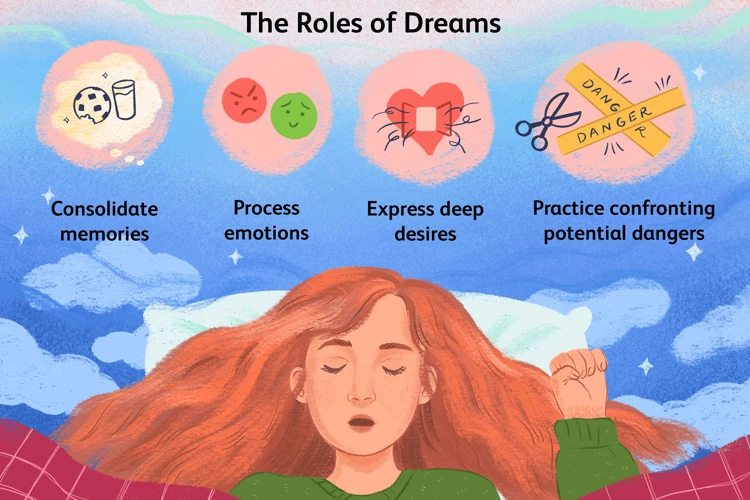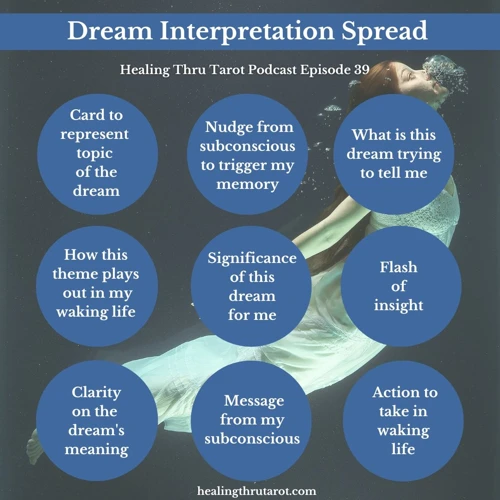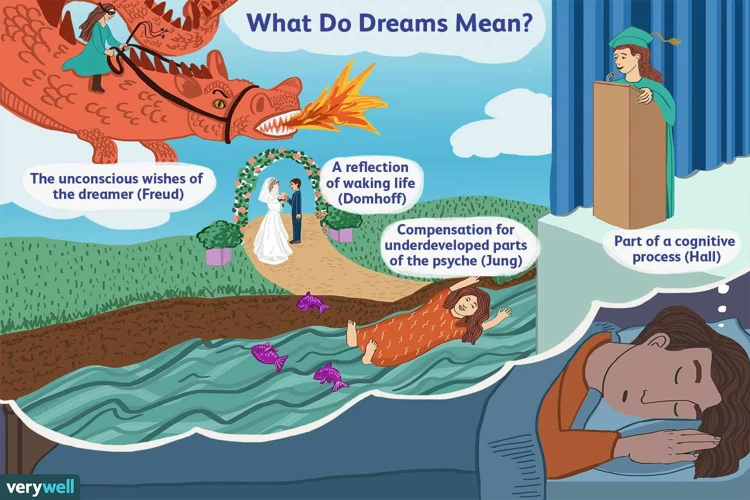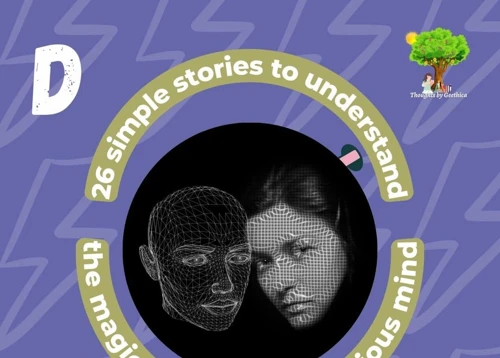The connection between dreams and the subconscious mind is a fascinating and enigmatic phenomenon that has puzzled humanity for centuries. It is a realm where our imaginations run wild, and where hidden desires, fears, and memories come to life. Exploring the depths of this intricate relationship uncovers a multitude of complexities and intricacies, opening up a realm of self-discovery and understanding. In this article, we will delve into the mysteries of the subconscious mind and its influence on our dreams, unravel the symbolic messages embedded within our dreamscapes, investigate the science behind dreaming, and explore how dream work can enhance our self-understanding. So, buckle up as we embark on a journey to decipher the secrets locked within our dreams and unlock the doorway to our subconscious minds.
The Subconscious Mind and Its Influence on Dreams

The Subconscious Mind and Its Influence on Dreams is a captivating subject that sheds light on the intricate relationship between our hidden thoughts, emotions, and the content of our dreams. Our subconscious mind plays a pivotal role in shaping the landscape of our dreamscapes, as it is the reservoir of our deepest desires, fears, and memories. While we may not be consciously aware of these underlying aspects of our psyche, they find expression in our dreams, offering a glimpse into the workings of our subconscious. Our dreams act as a canvas upon which our subconscious paints its vivid imagery, using symbolism and metaphors to convey its messages. Dreams serve as a means of communication from the subconscious mind, allowing it to bring to the surface unresolved emotions, conflicts, and desires that may be hidden from our conscious awareness. The subconscious mind uses dreams as a medium to process and integrate our experiences, explore unresolved issues, and provide insights into our innermost selves. By unraveling the symbolic language of dreams and exploring their hidden meanings, we gain valuable insights into our subconscious mind and can utilize this knowledge for personal growth and self-improvement. Understanding the influence of the subconscious mind on dreams opens up a whole new realm of self-discovery and introspection, helping us navigate the intricacies of our psyche. [source]
1. Understanding the Subconscious Mind
Understanding the Subconscious Mind is a key step in unraveling the mysteries of dreams and their connection to our innermost thoughts and emotions. The subconscious mind refers to the part of our mind that operates below the level of conscious awareness, influencing our thoughts, behaviors, and experiences. Unlike our conscious mind, which is logical and rational, the subconscious mind is driven by emotions, instincts, and desires. It is the powerhouse of our hidden beliefs, past traumas, and deeply ingrained patterns of thinking. The subconscious mind is responsible for processing and storing information that we may not be consciously aware of, and it shapes our perceptions and interpretations of the world around us. It has the ability to tap into a vast well of knowledge and intuition, guiding our decisions and actions. Through dreams, the subconscious mind communicates with us, offering insights, warnings, and messages that may not be easily accessible in our waking state. By understanding the workings of the subconscious mind, we can gain a deeper understanding of ourselves and the hidden forces that shape our thoughts, behaviors, and dreams. [source]
2. Exploring the Purpose of Dreams
Exploring the Purpose of Dreams delves into the fascinating question of why we dream and the significance these nocturnal experiences hold in our lives. While the exact purpose of dreams remains a subject of debate, several theories offer insights into their potential functions. One theory suggests that dreams serve as a form of psychological processing, allowing the subconscious mind to sort through emotions, memories, and experiences that have accumulated throughout the day. Dreams may help consolidate information, enhance learning, and promote memory formation. Another theory proposes that dreams provide a safe space for the exploration of unresolved conflicts and emotions, allowing individuals to unconsciously work through challenging situations and find resolution. Dreams may also serve as a means of wish fulfillment, offering an outlet for desires and fantasies that may be unattainable in reality. Additionally, some researchers believe that dreams can offer creativity and problem-solving benefits, as they allow the mind to generate novel connections and associations. [source] While the purpose of dreams may vary among individuals, cultures, and contexts, they undeniably play a significant role in our subconscious mind’s complex tapestry and offer unique insights into our innermost thoughts and emotions. Exploring the purpose of dreams provides us with a deeper understanding of ourselves and the potential for personal growth and self-discovery.
Dream Interpretation: Unveiling the Subconscious Messages

Dream Interpretation: Unveiling the Subconscious Messages is a fascinating practice that allows us to decipher the symbolic language of our dreams and gain deeper insights into our subconscious mind. Dreams often present themselves in a metaphorical and symbolic manner, making interpretation a crucial step in understanding their hidden messages. Symbolism in dreams can vary widely, as every person’s subconscious mind is unique and influenced by their individual experiences and beliefs. Analyzing these symbols can provide clues about our emotions, desires, and fears that may be operating beneath the surface of our conscious awareness. One commonly used technique in dream interpretation involves keeping a dream journal, where we record our dreams immediately upon waking. By documenting our dreams with descriptive details, we can better remember and analyze them later. Emotions in dreams also hold significant meaning as they can act as a guide to understanding the underlying emotional states within us. Additionally, recurring themes or symbols in dreams may suggest unresolved issues or patterns in our lives that warrant further exploration. The interpretation of dreams can be approached from different perspectives, including psychoanalytic approaches that delve into the deeper psychological meanings of dreams. Another intriguing method is exploring the influence of astrology on dream messages, considering how celestial bodies can impact subconscious thoughts and experiences. By unraveling the subconscious messages embedded within our dreams, we open up doors to self-reflection and personal growth, gaining valuable insights into our own psyche and the mysteries of the subconscious mind. [source]
1. Symbolism and Metaphors in Dreams
Symbolism and Metaphors in Dreams are powerful tools used by the subconscious mind to convey its messages. Dreams often present us with a symbolic language, where objects, people, and actions take on deeper meanings beyond their literal interpretation. These symbols act as bridges between our conscious and subconscious minds, allowing for a deeper exploration of our innermost thoughts and emotions. For example, dreaming about flying may symbolize a sense of freedom, liberation, or a desire to escape from real-life constraints. Similarly, water in dreams can represent the ebb and flow of emotions, while a snake may symbolize transformation or hidden fears. By deciphering the symbolism and metaphors in our dreams, we gain insight into our subconscious desires, fears, and conflicts. However, it is important to recognize that the interpretation of symbols may vary depending on the individual’s personal experiences and cultural context. Keeping a dream journal and reflecting on recurring symbols can help uncover hidden patterns and meanings in our dreams, leading to a deeper understanding of ourselves. [source]
2. The Role of Emotions in Dream Analysis
The Role of Emotions in Dream Analysis is a crucial element in unraveling the deeper meaning of our dreams and understanding the messages conveyed by our subconscious mind. Emotions play a significant role in shaping the content of our dreams and provide valuable clues about our innermost thoughts and feelings. When we are awake, our conscious mind often suppresses or filters out certain emotions, allowing them to manifest more freely in our dreams. Dreams can serve as a safe space for us to explore and process our emotions, even those that we may be unaware of during our waking state. Analyzing the emotional tone and intensity of our dreams can offer insights into our subconscious mind’s concerns, fears, desires, and unresolved conflicts. For example, feelings of fear or anxiety may indicate hidden worries or unresolved issues, while joy and excitement may signify inner contentment and satisfaction. By paying attention to the emotions experienced within our dreams, we can gain a deeper understanding of ourselves and our emotional landscape. Keeping a dream journal can be beneficial in recording and identifying recurring emotional themes or patterns in our dreams, aiding us in uncovering the inner workings of our subconscious mind. [source]
3. The Impact of Trauma on Dream Content
The Impact of Trauma on Dream Content is a crucial aspect of understanding the connection between our subconscious mind and dreams. Traumatic experiences can leave a profound imprint on our psyche, and this is often reflected in the content of our dreams. When someone undergoes a traumatic event, their subconscious mind processes the emotions and memories associated with it. These unresolved emotions and memories can then manifest in dreams, sometimes in the form of vivid and distressing nightmares. Trauma-related dreams can be characterized by recurring themes, symbols, or situations that are reminiscent of the traumatic event. The content of these dreams may vary depending on the individual and the nature of the trauma they experienced. Some individuals may experience direct reenactment of the traumatic event in their dreams, while others may have dreams that metaphorically represent their emotional struggles and anxieties. These dreams can serve as a way for the subconscious mind to process and cope with the trauma, allowing the individual to gradually heal and integrate the experience. It is important to note that trauma-related dreams can be distressing and may contribute to sleep disturbances or emotional distress. Seeking professional help, such as therapy, can be beneficial in processing and working through the impact of trauma on dream content. By addressing and integrating these dreams, individuals can move towards healing and growth. [source]
Lucid Dreaming: A Gateway into the Subconscious Realm

Lucid Dreaming: A Gateway into the Subconscious Realm is an intriguing phenomenon that allows individuals to become aware within their dreams and actively participate in the dream experience. In a lucid dream, the dreamer possesses a sense of consciousness and control, knowing that they are dreaming while still immersed in the dream world. This unique state of awareness offers a remarkable opportunity to explore the depths of the subconscious mind and tap into its vast potential. Lucid dreaming acts as a bridge between the conscious and subconscious realms, enabling individuals to navigate their dreamscapes with intention and purpose.
There are various techniques for inducing lucid dreams, such as reality checks, setting dream intentions, and maintaining a dream journal. Reality checks involve regularly questioning one’s reality throughout the day, which then becomes a habit that carries over into the dream state. By training the mind to question the nature of reality, individuals increase the likelihood of becoming aware within their dreams. Setting dream intentions involves mentally affirming the desire to have a lucid dream before sleeping, priming the subconscious mind to manifest this intention during the dream state. Keeping a dream journal helps in recognizing dream patterns and cues, leading to improved dream recall and increased self-awareness within dreams.
When an individual achieves lucidity in a dream, they can actively interact with the dream environment, examine dream objects and symbols, and engage in self-reflection. This state offers a unique opportunity for psychological exploration, with the dream acting as a tool for personal growth and self-discovery. Lucid dreaming can be used for various purposes, including overcoming fears and phobias, practicing new skills, enhancing creativity, and exploring the depths of the subconscious mind. By consciously navigating and manipulating the dream landscape, individuals can gain valuable insights into their innermost thoughts, emotions, and desires.
The power of lucid dreaming lies in its ability to connect individuals directly with their subconscious mind, allowing them to tap into the deep recesses of their psyche. Through lucid dreaming, individuals can gain a greater understanding of themselves, their motivations, and their fears. It provides a profound opportunity for self-exploration and personal growth. The practice of lucid dreaming has been linked to improved problem-solving abilities, enhanced creativity, and increased self-confidence.
Embracing lucid dreaming as a gateway into the subconscious realm offers a transformative journey of self-discovery and empowerment. By harnessing the power of lucidity in dreams, individuals can unlock the vast potential of their subconscious mind and embark on a path of self-realization and personal development. So, take the leap into the realm of lucid dreaming and unlock the hidden depths of your subconscious mind. [source]
1. Defining Lucid Dreaming and Its Connection to the Subconscious Mind
Defining Lucid Dreaming and Its Connection to the Subconscious Mind offers a fascinating insight into a phenomenon that allows individuals to become aware and consciously participate in their dreams. Lucid dreaming occurs when a person becomes conscious within the dream state, enabling them to actively engage with and manipulate the dream environment. Lucid dreaming provides a unique opportunity to bridge the gap between the conscious and subconscious mind, as it allows individuals to tap into the depths of their subconscious and explore its hidden realms. The connection between lucid dreaming and the subconscious mind is profound, as lucid dreams are believed to be a direct pathway to accessing and interacting with the subconscious. During lucid dreaming, individuals have the ability to confront their fears, explore unresolved issues, and delve into the depths of their psyche. This heightened state of consciousness within the dream world allows for a deeper understanding of oneself and the underlying motivations and emotions that govern our waking lives. Lucid dreaming acts as a bridge that connects the conscious and subconscious, offering a unique platform for self-reflection, personal growth, and even the development of skills and creativity. Through the power of lucid dreaming, individuals can harness the vast resources of their subconscious mind and unlock their potential for self-discovery and transformation. [source]
2. Techniques for Inducing Lucid Dreams
Lucid dreaming, the state of being aware that you are dreaming while still in the dream, offers a remarkable gateway into the realm of the subconscious mind. It allows individuals to actively participate in and even manipulate the contents of their dreams. While lucid dreaming may come naturally to some, there are several techniques that can help enhance the likelihood of experiencing this phenomenon. One popular method is reality testing, which involves regularly questioning one’s reality throughout the day. By performing reality checks such as looking at clocks or reading text, individuals can condition themselves to question their waking state. This habit will eventually carry over into dreams, prompting individuals to question whether they are dreaming. Another technique is known as mnemonic induction of lucid dreams (MILD). This involves setting the intention to have a lucid dream before going to bed and repeating affirmations, such as “I will have a lucid dream tonight,” or visualizing yourself becoming aware in a dream. By consistently practicing these techniques and maintaining a dream journal to improve dream recall, one can increase their chances of experiencing lucid dreaming and unlock the power to control their dreams. [source]
The Science Behind Dreams and the Subconscious Mind

The Science Behind Dreams and the Subconscious Mind delves into the fascinating field of neuroscience and explores the intricate processes that occur during dreaming. In recent years, advancements in research and technology have allowed scientists to gain deeper insights into the neurological mechanisms behind dreams and their connection to the subconscious mind. One prominent theory suggests that dreams are a result of the brain’s attempt to make sense of random neural activity that occurs during sleep. This theory, known as the Activation-Synthesis model, proposes that the brain generates images and narratives from these random signals, creating the vivid and often bizarre dream experiences we encounter. Another area of research focuses on the role of the limbic system, which is responsible for processing emotions and memories. The limbic system interacts with the neocortex during dreams, leading to the incorporation of emotional experiences and memories into dream content. Additionally, studies have shown that certain brain regions, such as the prefrontal cortex, which is associated with self-awareness and logical thinking, may be less active during REM sleep, contributing to the surreal and irrational nature of dreams. Neuroscientists also explore the phenomenon of lucid dreaming, where individuals become aware that they are dreaming and can exert some control over the dream narrative. This fascinating state of consciousness offers valuable insights into the relationship between the subconscious mind and dreams [source].
Research on dreams has also revealed interesting correlations between dream content and various aspects of our waking lives. For example, studies have shown that dreams often incorporate fragments of our daily experiences, highlighting the brain’s capacity to process and consolidate memories during sleep. Additionally, dreams can be influenced by our emotions, with positive emotions leading to more pleasant dream experiences and negative emotions potentially causing nightmares or anxiety-provoking dreams. The science of dreams is an ever-evolving field, and ongoing research continues to shed light on the intricate workings of the subconscious mind during dreaming. By understanding the scientific basis of dreams, we gain a deeper appreciation for the complexities of our subconscious and its influence on our dream experiences. [source]
1. Neurological Processes during Dreaming
Neurological Processes during Dreaming offer valuable insights into the fascinating mechanisms that underlie our dream experiences. When we enter the dream state, our brain undergoes a series of complex processes that contribute to the creation and maintenance of our dreams. One prominent feature of dreaming is the activation of the limbic system, the part of the brain responsible for emotions and memory. During dreaming, the limbic system becomes highly active, which explains the strong emotional experiences we often have in our dreams. Additionally, the prefrontal cortex, the area associated with logical thinking and self-awareness, experiences reduced activity during dreaming. This decrease in prefrontal cortex activity may help explain the sometimes illogical and surreal nature of dreams. Another fascinating aspect of neurological processes during dreaming is the rapid eye movement (REM) stage. During REM sleep, our eyes move rapidly, and this stage is thought to be closely linked to vivid dream experiences. Studies have shown that certain areas of the brain, such as the amygdala and hippocampus, play significant roles in the formation and consolidation of dream memories. Understanding the intricate neurological processes that occur during dreaming provides valuable insights into the complexities of our dream experiences and sheds light on the rich interplay between the brain and the subconscious mind. [source]
2. Research and Studies on Dreams and the Subconscious Mind
Research and Studies on Dreams and the Subconscious Mind have contributed significantly to our understanding of the intricate relationship between these two phenomena. Scientists and psychologists have conducted extensive research to unravel the mysteries of dreams and shed light on the workings of the subconscious mind. One area of study focuses on the neurological processes that occur during dreaming. Through advanced brain imaging techniques, researchers have been able to identify specific brain regions that are active during dreaming, such as the prefrontal cortex and the limbic system. These findings suggest that dreams are not random hallucinations but rather a result of the brain’s complex neural activity. Additionally, studies have also explored the role of dreams in emotional processing and memory consolidation. Dreams have been found to play a crucial role in processing and integrating emotional experiences, leading to emotional regulation and psychological well-being. Another branch of research investigates the therapeutic potential of dreams and dream analysis. Psychoanalysts, for example, have utilized dream analysis as a tool to uncover unconscious conflicts and provide insights into the patient’s internal world. This approach has been particularly effective in understanding the deeper layers of the subconscious mind and facilitating personal growth and healing. The research and studies conducted on dreams and the subconscious mind have deepened our understanding of these complex phenomena and highlighted their relevance in various aspects of human psychology and well-being. [source]
Applying Dream Work to Enhance Self-Understanding
Applying Dream Work to Enhance Self-Understanding is a powerful practice that allows us to tap into the depths of our subconscious mind and gain profound insights into our inner selves. One effective way to engage in dream work is by keeping a dream journal. This involves recording our dreams immediately upon waking, capturing as many details as possible, including emotions, symbols, and any significant events or interactions that occurred within the dream. By consistently logging our dreams, we create a repository of rich material that we can analyze and reflect upon. Regularly reviewing our dream journal helps us identify recurring patterns, symbols, and themes that may hold deeper meaning and significance. It also allows us to track our personal growth and observe how our dreams evolve over time. Dream analysis techniques, such as free association and amplification, can further enhance our self-understanding. Free association involves examining the emotions, memories, and thoughts that arise when we reflect on specific dream elements. Amplification, on the other hand, involves exploring the broader cultural, mythological, or archetypal meanings associated with dream symbols. By engaging in these practices, we can unlock the hidden messages embedded within our dreams and gain valuable insights into our subconscious desires, fears, and conflicts. Additionally, psychoanalytic approaches to dream analysis, pioneered by Sigmund Freud and Carl Jung, offer frameworks for interpreting dreams based on their connection to our unconscious mind and inherent symbolism. These approaches can provide further guidance in unraveling the complexities of our dreams and deepening our self-understanding. Ultimately, applying dream work techniques empowers us to integrate the wisdom of our subconscious mind into our waking life, promoting personal growth, emotional healing, and self-transformation. [source]
1. Keeping a Dream Journal for Personal Insight
Keeping a Dream Journal for Personal Insight is a powerful practice that allows us to tap into the depths of our subconscious mind and gain valuable insights into our inner world. By recording our dreams in a journal, we create a tangible repository of our nocturnal experiences, providing a valuable resource for self-reflection and analysis. When we wake up, our dreams often fade quickly from memory as we transition into the waking state. However, by immediately jotting down the details of our dreams in a journal, we capture the essence of these experiences and preserve them for further exploration. Writing in a dream journal can be as simple as describing the key elements of the dream, including the people, places, and events that occurred. It is also beneficial to record any emotions or sensations experienced during the dream. Over time, patterns may emerge, recurring symbols may become apparent, and connections between dreams and waking life may be revealed. Reflecting on these patterns and connections can provide profound insights into our subconscious mind and its influence on our daily lives. Additionally, a dream journal serves as a valuable tool for working with dreams in a therapeutic or analytical context. It allows for a deeper exploration of the symbolism and themes present in our dreams, providing a rich source of material for dream analysis and interpretation. By keeping a dream journal, we develop a heightened awareness of our dreams and cultivate a stronger connection with our subconscious mind, leading to a greater understanding of ourselves and our inner world. [source]
2. Psychoanalytic Approaches to Dream Analysis
Psychoanalytic Approaches to Dream Analysis offer a unique perspective on unraveling the hidden meanings and symbolism embedded within our dreams. Originating from the pioneering work of Sigmund Freud, psychoanalytic theory suggests that dreams serve as a pathway to our unconscious mind and can provide valuable insights into our deepest desires, fears, and unresolved conflicts. According to Freud, dreams are the disguised expressions of our unconscious wishes, often manifesting in symbolic form. Through techniques such as free association and dream interpretation, psychoanalysts aim to uncover these hidden meanings and connect them to the underlying aspects of our psyche. The interpretation of dreams within a psychoanalytic framework involves examining elements such as dream symbols, manifest content (the actual events of the dream), and latent content (the hidden meaning or unconscious thoughts). By delving into the symbolic language of the dream, psychoanalysts can help individuals gain a better understanding of their unconscious mind, identify unresolved conflicts or desires, and promote personal growth and self-awareness. While psychoanalytic approaches may not provide definitive answers, they offer a valuable tool for exploring the intricate workings of our subconscious mind and unlocking the messages hidden within our dreams. [source]
Conclusion
In conclusion, exploring the connection between dreams and the subconscious mind reveals a profound and intricate relationship that holds significant importance in our lives. Our dreams serve as a window into the workings of our subconscious, allowing us to gain insights into our hidden desires, fears, and emotions. By understanding the influence of the subconscious mind on dreams, we can unravel the symbolic messages embedded within them, uncovering valuable information about ourselves and our inner world. Whether through analyzing dream symbolism, exploring the impact of emotions on dream content, or delving into the realm of lucid dreaming, we have the opportunity to tap into the power of our subconscious mind for personal growth and self-understanding. Moreover, the scientific study of dreams and the subconscious mind provides us with a deeper understanding of the neurological processes that occur during dreaming, shedding light on this mysterious realm. It is through dream work that we can unlock the potential for self-discovery and enhance our overall well-being. So, embrace the power of dreams and the subconscious mind, embark on a journey of self-exploration, and unlock the hidden depths of your psyche. [source]
Frequently Asked Questions
1. Why do we dream?
Dreaming serves multiple purposes. It allows the subconscious mind to process and consolidate memories, emotions, and experiences from waking life. Dreams also provide a way for the subconscious to communicate important messages and insights to the conscious mind.
2. Can dreams predict the future?
While dreams can sometimes contain elements that seem prophetic, it’s important to approach these experiences with skepticism. Dreams are highly subjective and are shaped by personal beliefs, experiences, and emotions. There is no scientific evidence to suggest that dreams have the ability to accurately predict future events.
3. Do dreams have symbolic meanings?
Yes, dreams often contain symbolism and metaphors that represent deeper meanings. These symbols can be unique to each individual and may require interpretation based on personal experiences and associations.
4. Can trauma affect dream content?
Yes, trauma can significantly impact dream content. It can manifest as vivid and recurring nightmares, as well as themes related to the traumatic event. Dreams provide a way for the subconscious mind to process and cope with traumatic experiences.
5. What is lucid dreaming?
Lucid dreaming is a state in which the dreamer becomes aware that they are dreaming. It allows individuals to have conscious control and awareness within the dream, offering a unique opportunity to explore and interact with the dream world.
6. How can I induce lucid dreams?
There are several techniques to induce lucid dreams, such as reality checks, keeping a dream journal, practicing meditation and visualization, and using mnemonic induction techniques (MILD) or wake-induced lucid dreaming (WILD) methods. Experimentation with different techniques can help individuals find what works best for them.
7. What happens in the brain during dreaming?
During dreaming, specific regions of the brain, such as the prefrontal cortex and amygdala, become active. The prefrontal cortex is involved in higher cognitive functions and decision-making, while the amygdala plays a role in processing emotions. Neurotransmitters like serotonin and norepinephrine also play a role in modulating dream states.
8. Are there any scientific studies on dreams?
Yes, there is a significant body of research dedicated to studying dreams and their associated processes. Studies have explored various aspects such as dream content, dream analysis techniques, the neurological basis of dreams, and the effects of dreams on mental health and well-being.
9. How can keeping a dream journal enhance self-understanding?
Keeping a dream journal allows individuals to record and reflect on their dreams over time. This practice helps to identify patterns, recurring symbols, and themes within their dreams, offering valuable insights into their subconscious mind and emotional states. It can also aid in identifying connections between dreams and real-life experiences.
10. What is psychoanalytic dream analysis?
Psychoanalytic dream analysis is an approach that focuses on the interpretation of dreams to gain insights into an individual’s unconscious desires, fears, and conflicts. It explores the symbolism and latent content of dreams to uncover hidden meanings and promote self-awareness and personal growth.








